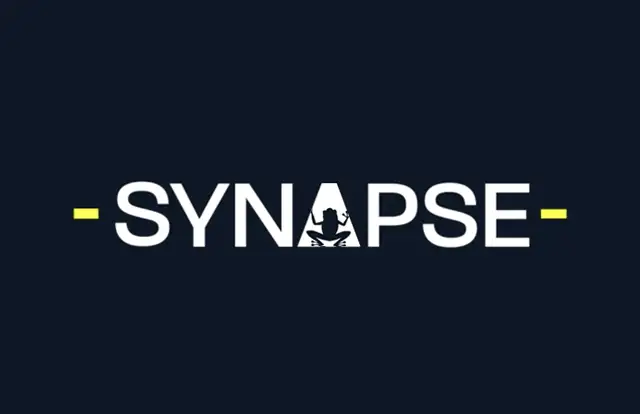The Nation Wants to Grow

It was a scene befitting the topic—sharp minds converging to address the grand intersection of design and nation-building. Organized by Lopez and BITS School of Design, Forum 34 took place at the India Habitat Centre, New Delhi on September 30, 2024, with an audience of architects, designers, and policy-makers eager to absorb insights from two titans: UX pioneer Don Norman and India’s G20 sherpa Amitabh Kant. Both men, in their own way, illustrated how design is neither a luxury nor an afterthought, but a national necessity.
We extend our heartfelt appreciation to Nandita Abraham, Dean, BITS Design School, for making this moment in time possible. Nandita recalled tussling with the question of what a new design institution’s intent should be: creating designers who surpass the boundaries of design, who can fruitfully collaborate with engineers, managers, businesspeople, lawyers etc. to shape tomorrow.

Anthony Lopez, founder & CEO of Lopez Design, opened the session with a simple yet powerful thesis: Design is for change. He pointed to successes like the Swachh Bharat campaign, where design didn’t just involve signage and slogans, but engineered a sweeping behavioural and infrastructural shift in the country. Public health campaigns like Ayushman Bharat, supporting local health centers with simple yet effective design strategies, and the famous Jaipur Foot, crafted to allow amputees to sit cross-legged, were further evidence of how design changes lives, improves societies, and indeed, redefines what’s possible.

Professor Don Norman is 88. He tours the globe, addressing students, serving on boards, helping shape design curriculums; it’s humbling. With his characteristic thoughtfulness, Norman took the audience through the real essence of design: problem-solving. Pretty products are art, he said, while design is a way of thinking. He urged the assembled crowd not to get distracted by mere aesthetics. Design, he said, should diagnose the root causes of problems. Craft bespoke solutions that address root causes, not symptoms.
Norman highlighted two distinct areas where design operates: products for the masses and solutions for societal challenges. The former involves standardization, requiring adjustments to local cultures and regulations—he used automobiles as an example, noting how driving customs affect the design of cars in different countries. The latter, though, is a much more nuanced process. When designing for societal needs, one must first understand people’s problems and needs intimately, and only then create solutions that truly fit.

Education, Norman argued, was one of the most critical spaces for design. Instead of rote learning, young children should be engaged through problem-based projects that encourage creativity and curiosity. This kind of “design-first” thinking could transform the very fabric of schools, not just in India but around the world. He advocated for the integration of designers into policymaking, citing his experiences in the United Kingdom where designers work alongside officials to ensure better, more human-centered policies.
Amitabh Kant’s contribution provided a practical grounding to Norman’s intellectual framework. He presented facts that painted a stark picture of India’s future: 500 million more people will become urbanized in the next 50 years, and India aims for a GDP of $30 trillion by 2047. Urbanization at this scale cannot be left to chance. India must avoid the mistakes of other rapidly urbanizing nations and adopt citizen-centric design—cities for people, not cars. Walkability, cycling, public transport, and sustainable urban infrastructure should be the cornerstone of future city planning.

Kant moved seamlessly into one of the hottest topics of our time: sustainability. With 2023 marked as the hottest year on record, the urgency for sustainable design was evident. Cities, he emphasized, should prioritize long-term solutions for solid waste, sewage disposal, and eco-friendly habitats.
But Kant didn’t stop at urban infrastructure. He took the opportunity to celebrate India’s strides in digital public infrastructure, such as Aadhaar, which has enabled 550 million bank accounts, and innovations in sectors like insurance and stock brokerage—Zerodha being a notable example. Design, he argued, has already played a role in these successes, but the next frontier is education and healthcare. Kant stressed the importance of designing for India’s young population—the average age is 29—and cited NITI Aayog’s Atal Tinkering Labs as a step in the right direction, with 10,000 labs set up to teach children through hands-on learning with AI and 3D printing.

The conversation also touched on scaling—a particular challenge for populous countries like India. Norman’s example of TEDx scaling globally by establishing clear but flexible guidelines was compelling. Similarly, India’s design challenges must be approached with agility and the power of small, replicable solutions.
Kant offered several examples of how India has successfully scaled up design solutions, from reducing the cost of LED bulbs by 85% to expanding electric buses across seven cities. For him, the takeaway was clear: set the right standards, and mass production will follow.
The Q&A that followed brought forward some provocative ideas. When asked about the creation of a Ministry of Design, Kant dismissed the idea. Design is multidisciplinary, he said, and no single ministry could contain it. Instead, he advocated for nurturing design entrepreneurs to meet the diverse needs of 1.4 billion people.

In his final remarks, Norman delivered what might be the most critical point of the evening: Design is care. It’s about empathy for human beings and the environment. If we truly care about the future, sustainability must be at the heart of every design decision.
The discussion ended, but the question remained: Can India design its way to a better tomorrow? Forum 34 only intended to be a starting point for something larger. With the conversation stepping beyond the room, discussions carrying on over social platforms, with thinkers like Norman and doers like Kant leading the way, the answer seems not only possible but likely.

We’d compiled 60 design projects from around the world to create a wall at Forum 34. Our wall aimed to pose the question: What is possible through design? 60 cases, with reading material on each. We’re happy to open source this for the community. You can access the compilation here.

Related Projects
Nestaway
BRAND STRATEGY + BRAND IDENTITY + PRINT DESIGN + PACKAGING + UI&UX + DIGITAL & SOCIAL MEDIA + SPACE BRANDING + ACTIVATION
Synapse
BRAND STRATEGY + BRAND IDENTITY
Join our mailing list
Receive our periodic newsletter on Branding, Experience, and Design thinking.
More Articles
The Sustainability Paradox
The Simple Truth about Design is Complicated
Follow us on
Insights
Follow Us
© 2025 Lopez Design Pvt. Ltd. All rights reserved



